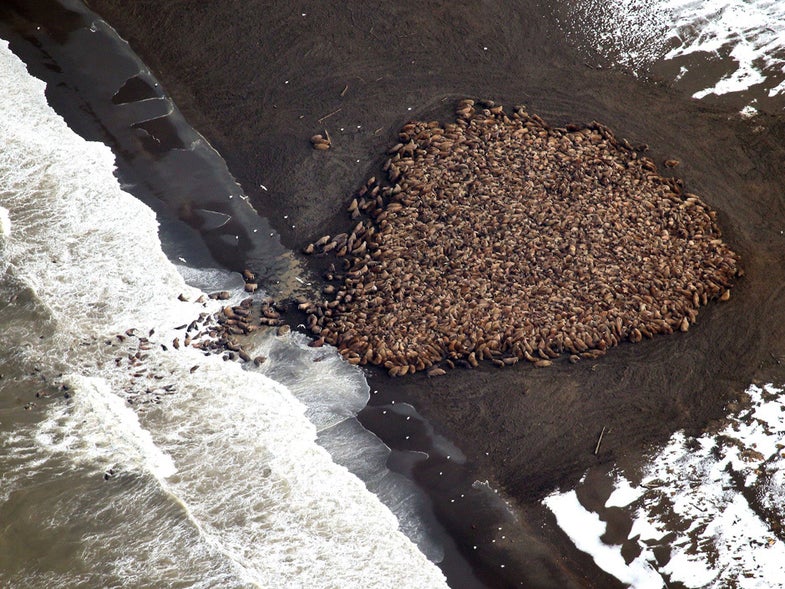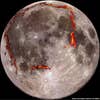The Navel Of The Earth
This humongous crater is actually a retired diamond mine in Siberia. The 525-meter-deep and 1.2-kilometer-wide pit is the second-largest excavated hole in the world.
The Aral Sea
These images from NASA’s Moderate Resolution Imaging Spectroradiometer (MODIS) compare the change in size of the Aral Sea from August 25, 2000 (left) to August 19, 2014 (right). For the first time in recorded history, the eastern basin of the South Aral Sea has disappeared. The lake in Central Asia has been losing water since the 1950s to farmland irrigation programs.
Artificial Knee Joint
Those may look like worms, but this image is actually a close up of an artificial knee joint, photographed under a Scanning Electron Microscope. The “worms” are loosely woven metal wires which allow for bone to grow into the replacement — melding the organic and synthetic structures together. The lumpy fragments on the wires are pieces of tissue still attached to the man-made joint after being removed from a patient during surgery.
The Valley Side Of The Moon
Using gravity maps, scientists have discovered on the moon a rectangular structure buried just below the surface. It’s the size of North America, Europe and Asia combined. They believe the 2,500-kilometer-wide series of intersecting lines was created when the remains of ancient rift valleys filled with lava about 3.5 billion years ago.
Supermassive Supernova
This is what a primordial star may have looked like as it died. The first stars, which were about 55,000 times the mass of the sun, seeded the universe we know today when they self-obliterated.
Nanograss
Researchers at the University of Massachusetts Amherst and partner schools are using nanograss to help overcome a classic problem in organic solar cells. The current technology used for harvesting energy from cells is inefficient and unstable due to a dead end problem in its architecture. Nanograss’ unique structure offers a way to address the issue of dead ends while improving efficiency by increasing light absorption in thin silicon film.
Mega Flares, Mini Star
NASA’s Swift satellite detected the largest, hottest, and longest series off stellar flares unleashed by a nearby red dwarf star, as illustrated in this artist’s rendering. The star, DG CVn, is only one-third the size of the sun, but the eruption was 10,000 times greater than the second-largest flare on record from 2003.
Walrus World
Dramatic sea ice loss caused Pacific walruses to come ashore in record numbers in September. The National Oceanic and Atmospheric Administration (NOAA) spotted an estimated 35,000 walruses on Alaskan beaches during their annual arctic marine mammal aerial survey.
Simulated Diesel Engine
Argonne National Laboratory ran the largest diesel engine simulation ever done. Using the fifth-fastest supercomputer in the world, engineers simulated half a second of the chaos that occurs inside a combustion engine. Being able to simulate an engine is helpful because it’s cheaper and quicker than having to reconfigure hardware. Simulations can also help save fossil fuel by finding ways to make engines more efficient.










